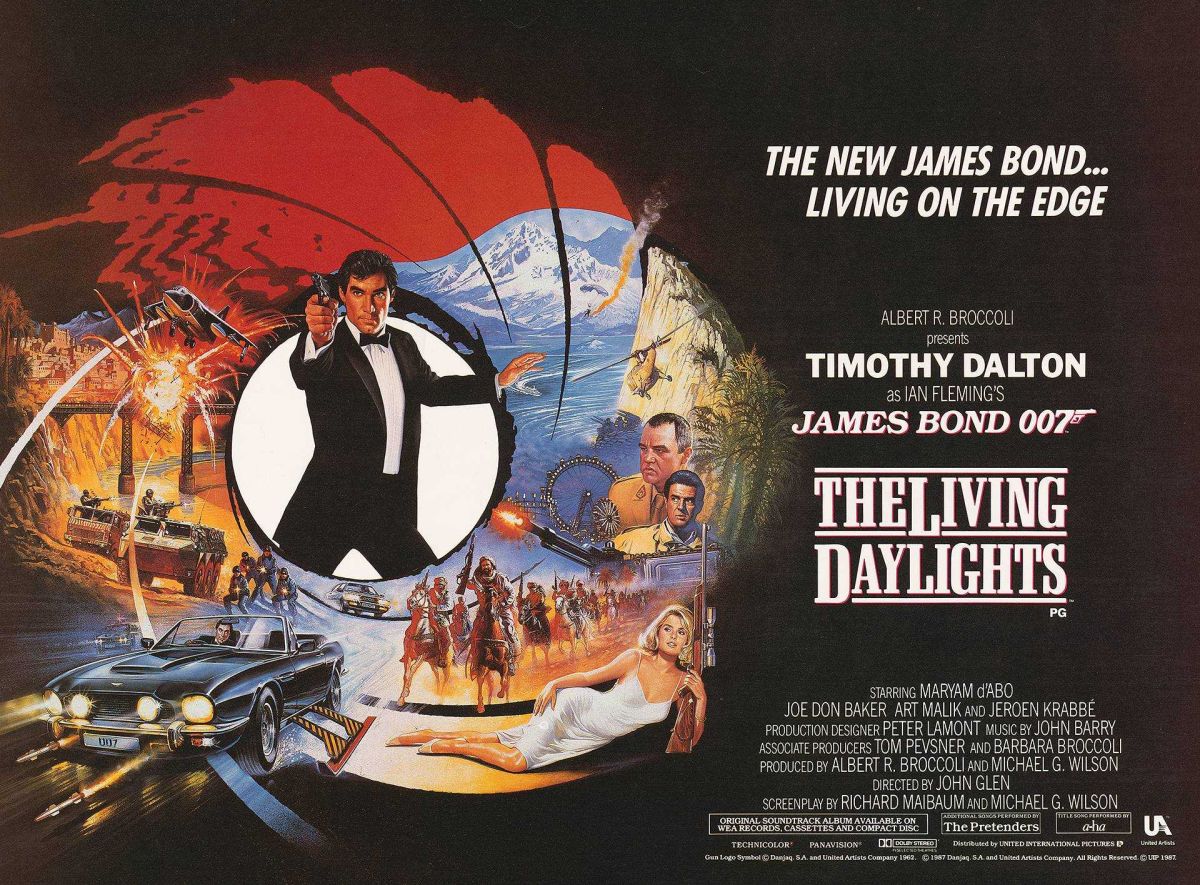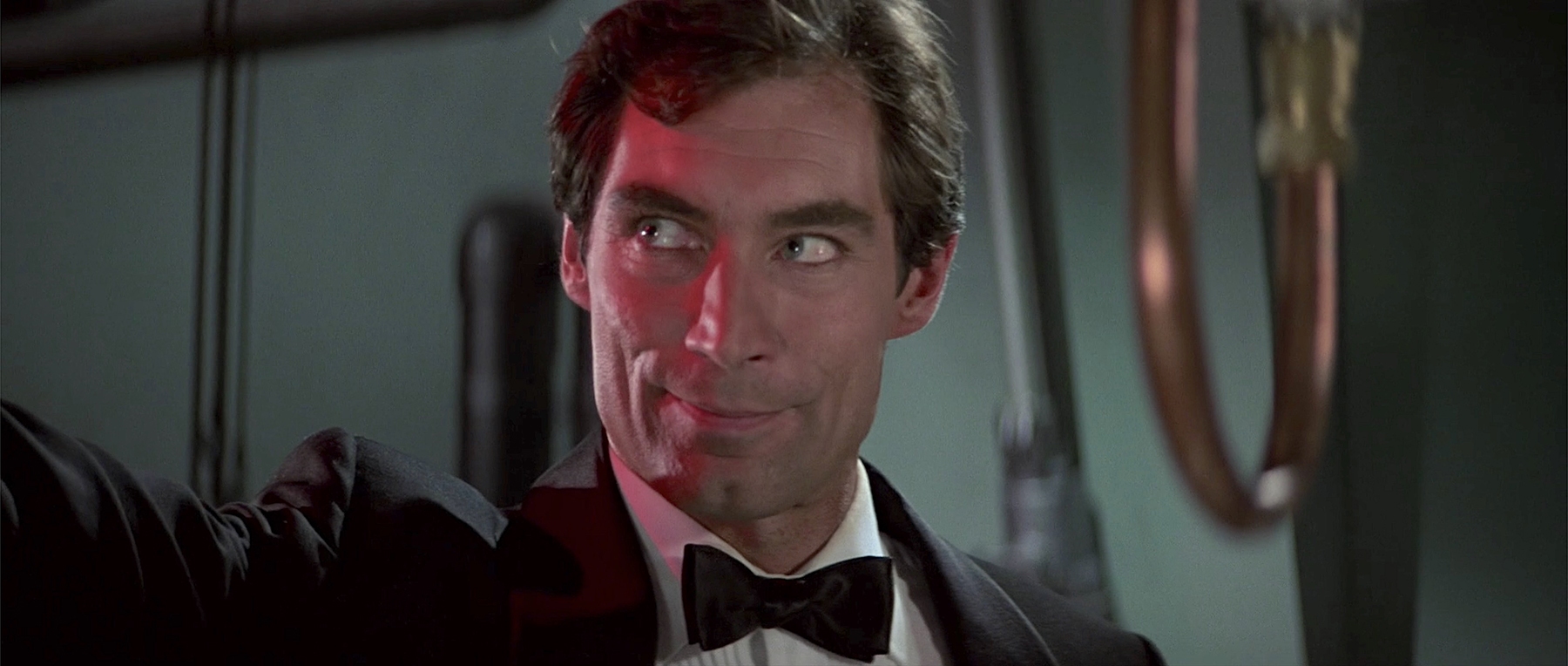
New Bond Fills Bill in The Living Daylights
It’s a joint effort as several franchise vets re-team to introduce the world to a new 007.
“I was working in the States at the time on a film called King Kong Lives for [Dino] De Laurentiis when the call came. They said there was a chance I would get the Bond film. I thought that was the biggest joke of the year! You don’t expect to get the Bond until you’ve been lighting about 10 or 15 years, you see. Alan Hume, my predecessor, couldn’t do it. He was committed to another film. So it happened and I can’t tell you — it’s one of the big highlights. The only other highlight would be to win an Oscar or something like that, you know,” said the director of photography Alec Mills, BSC on a lovely English spring day. The Living Daylights is Mills’ sixth Bond film, but his first as director of photography, and he was clearly pleased and excited that he had been given the responsibility. “My predecessors were big-time [BSC] cameramen like Freddie Young, Michael Reed and Alan Hume. They’ve set very high standards with the Bond films over the years. I really hope I live up to their standards.”

Mills, along with production designer Peter Lamont and special effects supervisor John Richardson, are at the core of the group of filmmakers that have helped make James Bond a legend — not just among moviegoers, but among movie makers. The film had a preproduction schedule of about six months and a shooting schedule of 19 weeks. It opens on July 31 [1987] in the United States. In late April, when the new film was screened in final rough cut for the first time, this core group had an opportunity to talk about their contributions.
Alec Mills’ first Bond film was On Her Majesty's Secret Service in 1969. (A new Bond was introduced in that film as well — George Lazenby.) Mills became a director of photography in 1980 on a British television pilot Island of Adventure. His most recent feature credits include Biddy, Lionheart and the mini-series Shaka Zulu. Mills began as a clapper boy and worked his way up, and he credits three cameramen in particular with his education. “If I had three names that I could say I owe for my trade they would be these: Harry Waxman — the most technically proficient cameraman we had in England at the time; Michael Reed, a real gentleman, who taught me how to handle people and get the best from them; and last, but not least, Alan Hume — my predecessor on Bond. The great thing about Alan was his enthusiasm.”
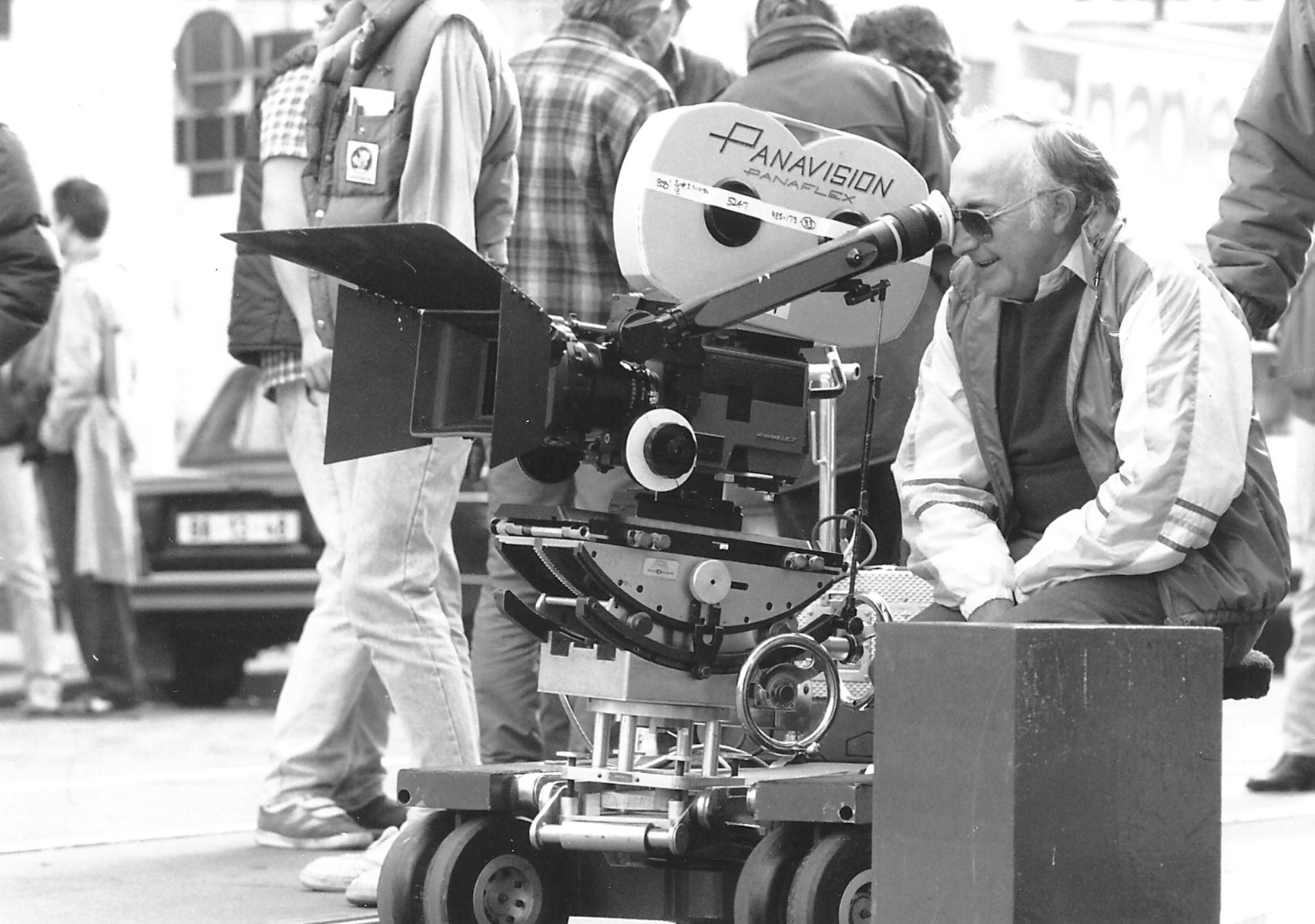
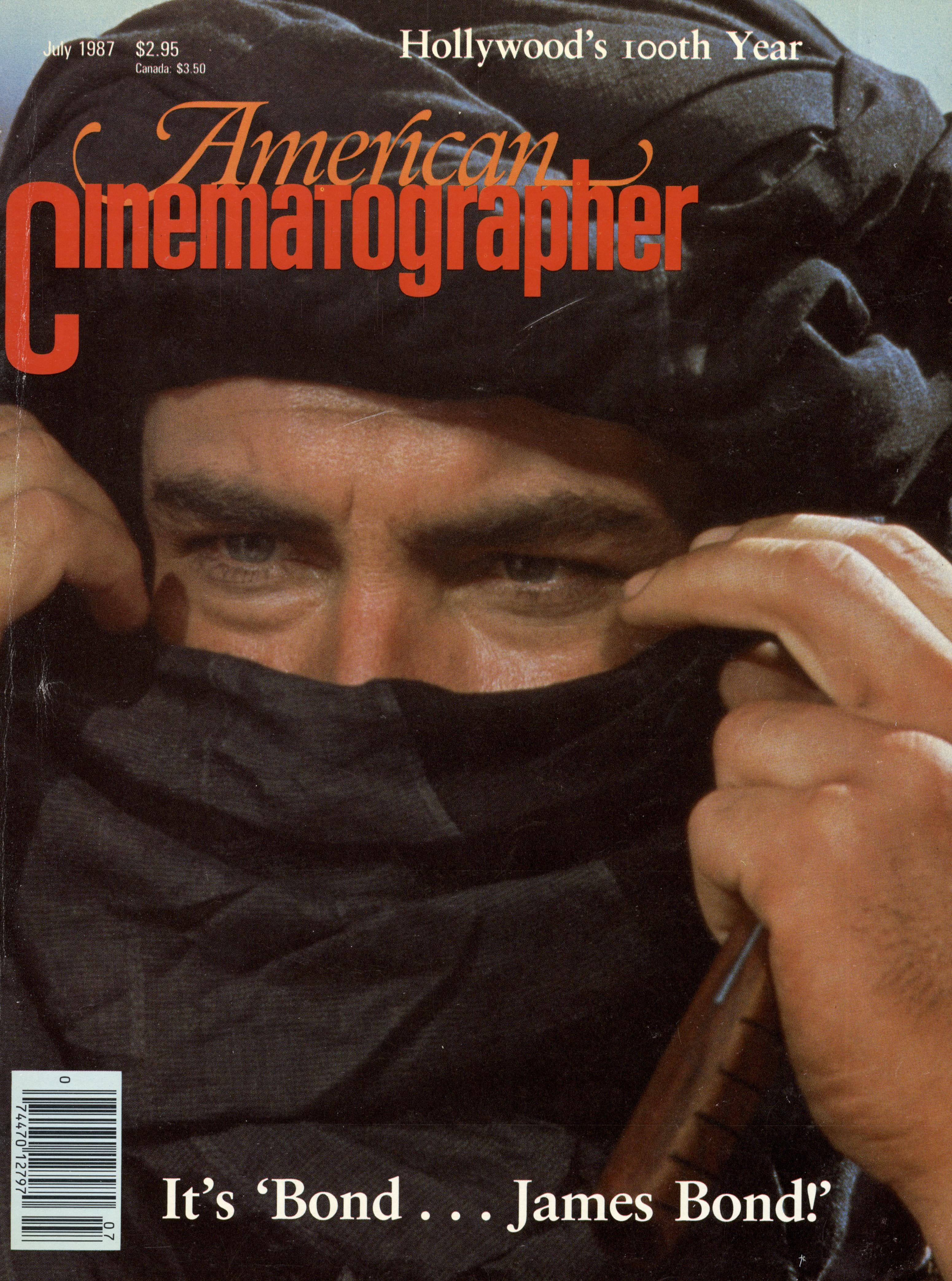
Under the tutelage of these men, Mills developed his own style of lighting and he sees it as being well-grounded in “the old school. For instance, I light from footcandles because I think it is more accurate than reading off the stops,” explained Mills. “I don’t like to use a lot of reflected light. I have seen bounced light — on ladies in particular — and I don’t think it’s very good. It tends to emphasize the pigment in the skin and I can see things I try not to see. I try to make a lady or a man look good. So I like to see the light go through soft papers or silk on the key with a little fill. I also find it’s much easier to control than bounced or reflected light. With the fast stocks these days, they pick up every little bit of light that’s going. There is something in the old school of lighting that I like. There is a crispness, a molding of faces. It’s for me, but it’s not everybody’s choice.”
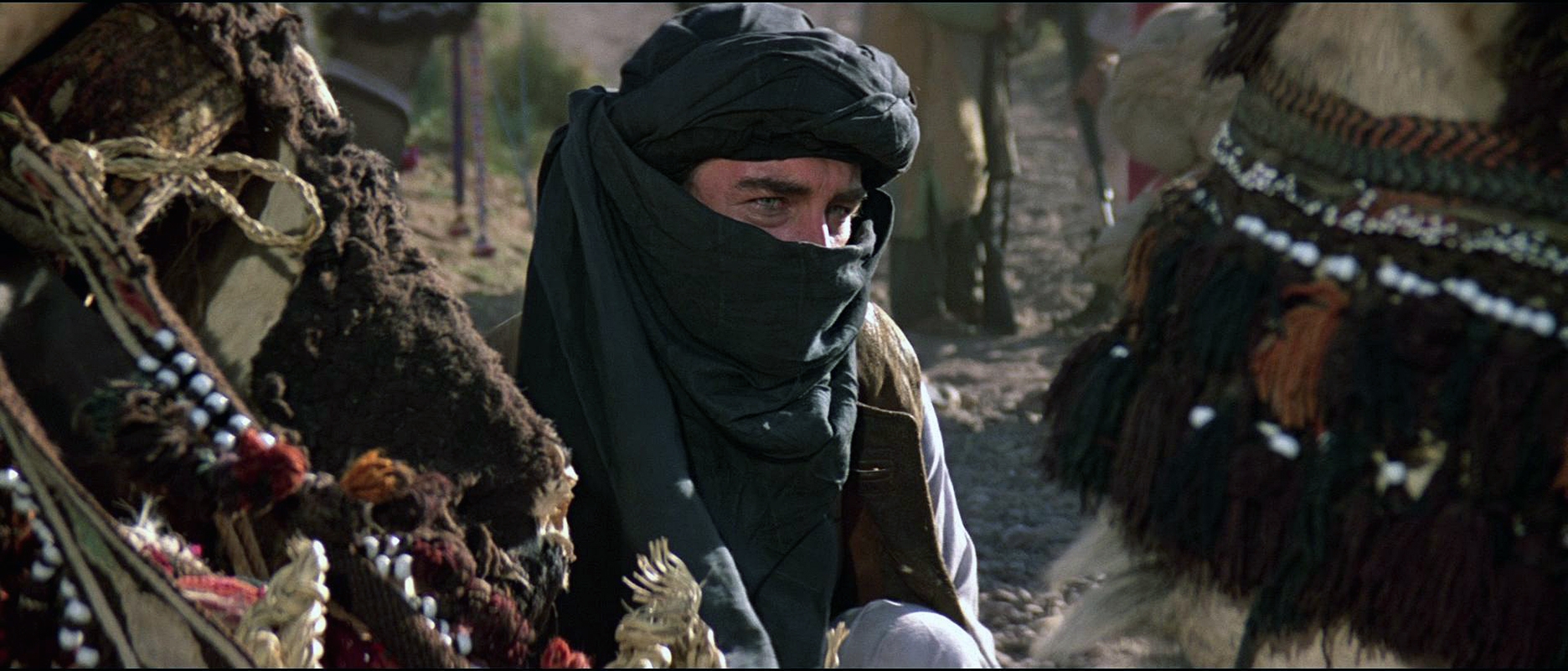
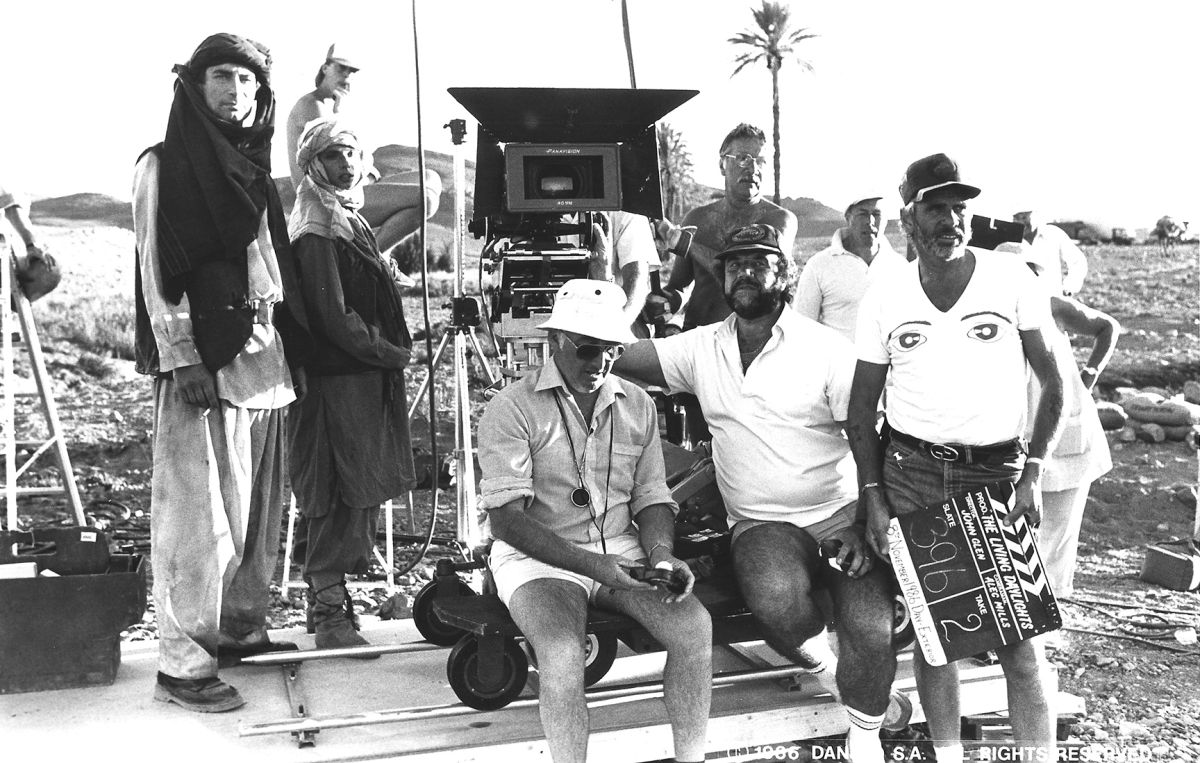
That style is part of the recognizable change in the new Bond. Mills noted that Hume’s Bond films tended to have a lot of diffusion and softness about them, but he and director John Glen have gone back to the look of the earliest Bonds: “We had no fancy dress-ups, no diffusion on the artists — we kept it clean. There is a certain amount of diffusion in an anamorphic lens anyway. It’s not as crisp as some of the spherical lenses. We felt that there was enough diffusion in the anamorphic system as it was. My style is a sort of Boys Own — a glossy, shiny, magazine look — straightforward stuff. Realism in the sense that it was natural. I thought we should keep it clean and fun — just good entertainment.”
Many cinematographers have commented on the difficulties of close-ups with anamorphic lenses. Mills admits that the system can be rough on some actors but thinks that the key is in simply being careful.
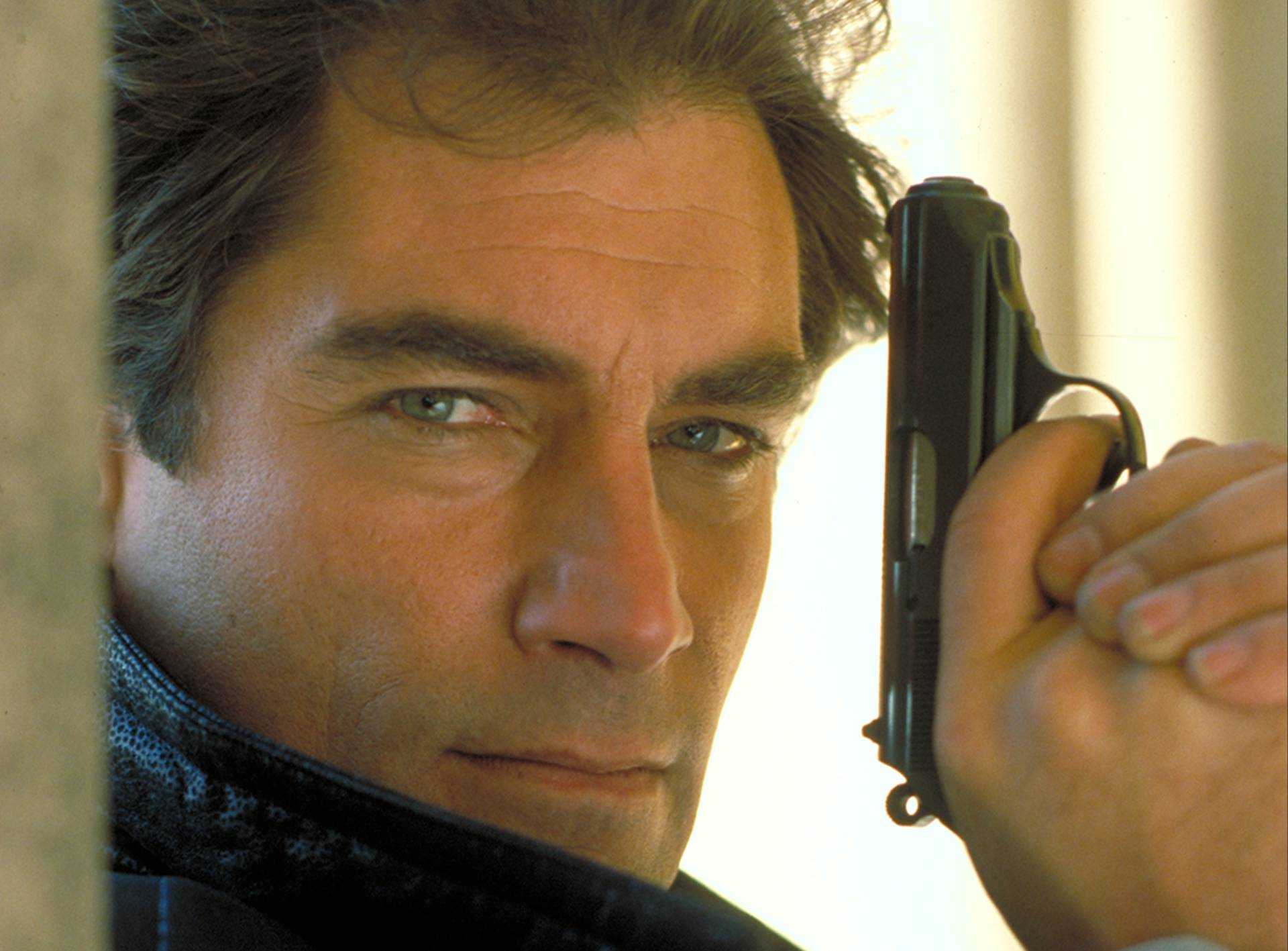
“I don’t think anamorphic close-ups are particularly difficult,” he said. “Anamorphics aren’t as kind to faces as longer focal lenses are. And there is one particular shot in this film where Bond turns very close to the camera and it probably should have been shot with a different lens for that reason. Obviously, if you use a wide-angle lens you have to be very careful of distortion.
“When you start to work with your artists, you start to notice their imperfections. After you see rushes you realize you can improve on what you’ve done. But I really didn’t have any problem with Maryam d’Abo [Kara]. She’s quite pretty. And Tim [Dalton] is easy to light because he likes to look rugged. I never used soft light or diffusion on either of them. I didn’t have to.”
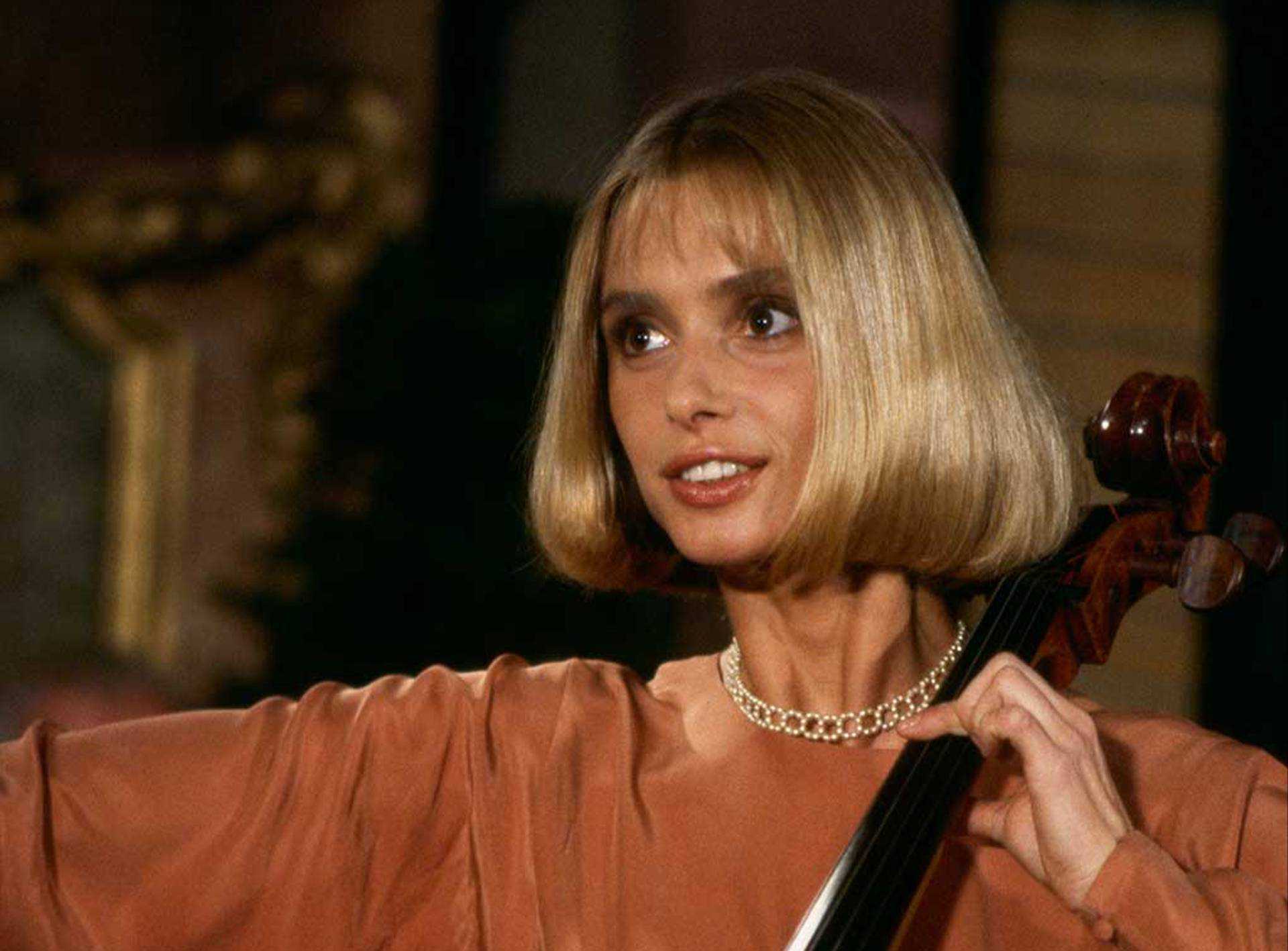
Mills likes to use the Panavision system if he can: “They are always developing new lenses and that’s the most important thing — crisp lenses. I want Bond very crisp, very sharp.” Mills also chose Eastman 5247 and 5294. He used the 94 for interiors and night shooting and 47 for exteriors because the two stocks match well. And matching on a Bond film is one of the keys to success.
Mills said, “Matching is one of the difficult things for us. I remember when I was a clapper boy, I could sit in back of the camera truck and look out the window and say ‘The sun’s not out today, we can’t work.’ We started in sunshine and we’d wait for it to come out again. Those days are gone. Now we shoot if the sun’s out or in, if it’s foggy — it doesn’t matter. But it’s much easier to match with the stocks we have.
“Actually, I wouldn’t say easier — there are always problems that go with this sort of thing. If you’ve got a sunset — as we did in Morocco when the plane with the diamonds lands — and it’s far too red, it’ll be printed down to take some of the redness out and still retain the look of evening. Now if you want to match that the next morning then you have to start to introduce your own colors [i.e. CTO filters]. You’re always struggling — there’s never a moment you can sit down and say, ‘Well, it’s going to be easy from now on.’”
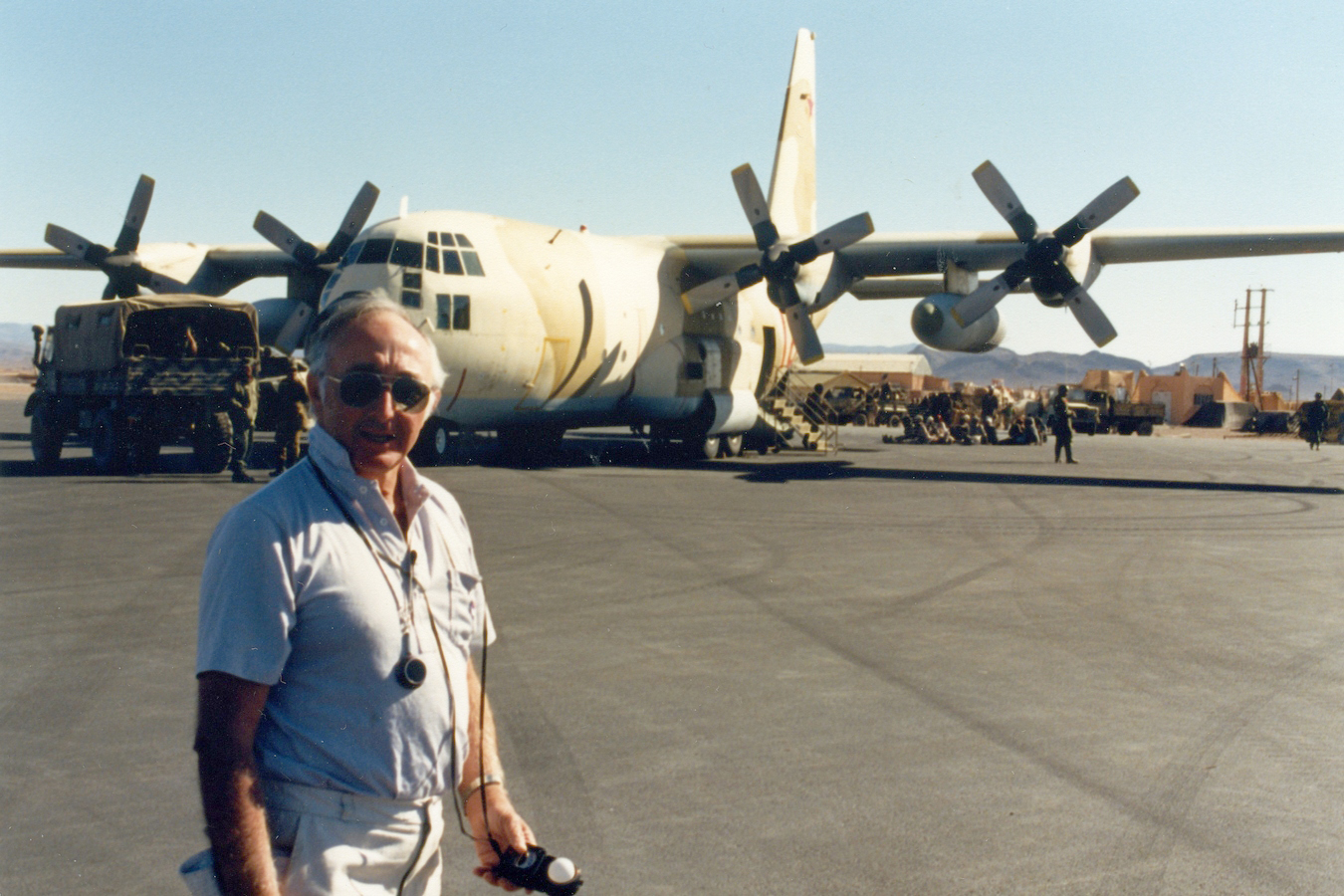
To make the struggle more difficult, there was a minimum of three camera crews shooting simultaneously on this picture. It is Mills’ job to light for the main unit, but he oversees the look of the entire picture and is constantly meeting with second-unit director/cameraman Arthur Wooster [BSC] and effects supervisor Richardson. “The second unit on a Bond film is very large and we have to match their work as well as their matching ours. It depends on who starts the sequence off. The opening sequence of The Living Daylights was basically second unit work shot in Gibraltar. They started two weeks before us and we had to match all our close work with the artists to what Arthur had shot — the boot was on the other foot there. It’s no problem usually because we sit down and discuss what we’re going to do. ‘We’ll keep this sequence cool’ or ‘shoot it in the nice early morning light’ or something like that. We might decide that our unit will underexpose a stop or we might want to get a fully exposed negative and let the lab print it down. So when we do go off in different directions, we understand each other,” concluded Mills.
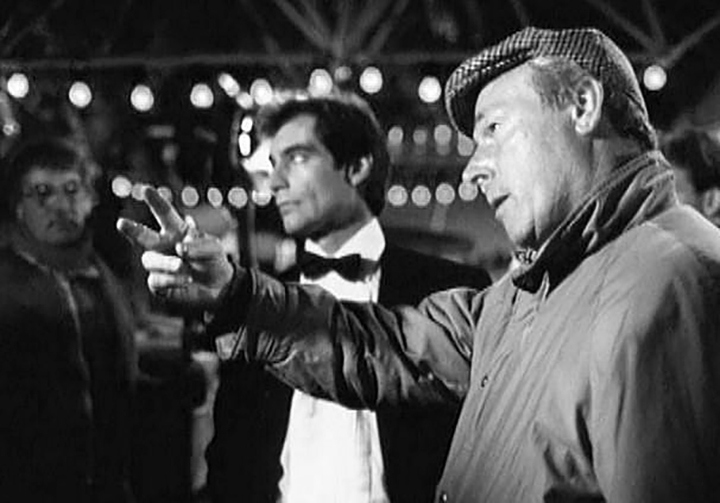
Locations in the Bond films are virtually minor characters. The Living Daylights sent camera crews to six different countries. And what does the well-traveled cameraman take with him when he globetrots? “When I know I’ll be shooting exteriors, I take HMI lights, maybe about three or four 6Ks or 4Ks. If I’m doing night, I like to go tungsten, which is much easier to control.” Mills continued, “We did use a crane, but John feels that often a crane can be too much. The shot in Vienna where we started on the orchestra and came around through the sunshine and down to a horse and buggy was a very moody shot and it needed that long movement to create the Viennese mood. You can’t do it too often because it becomes almost a cliche and if you hold on the whole crane shot it tends to move very slowly. John likes a film to really zip. I like a crane shot, but it’s got to be right. I don’t like to use it as a gimmick. We do use a lot of dollies. John likes to move the camera quite a chunk. Wherever we go we take a basic 100 feet of track with us anyway.”

in Vienna.
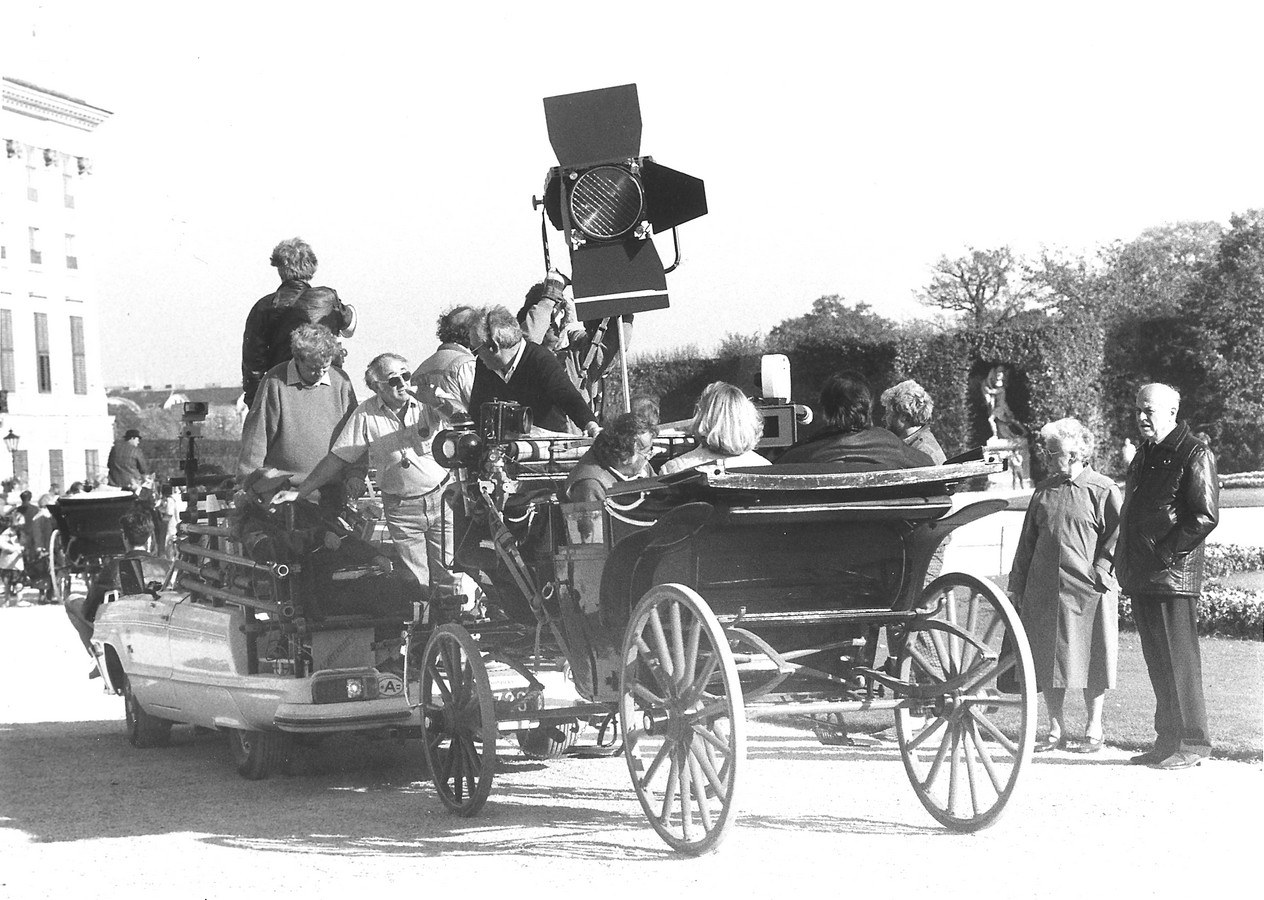
Vienna was one of the first stops for the location crews. The first unit spent 10 very long days shooting exteriors and even some interiors in such places as the Hotel Im Palais Schwarzenberg, a palace begun in 1697; the Sofiensaal Theater, where both Johann Strausses played; and the grounds of the Palace of Schönbrun, a favorite of the Hapsburgs. The most interesting and maybe the most familiar location for film buffs was the magnificent Wiener Prater — Vienna’s large amusement park. It was in this park, the home of the giant Ferris wheel called the Riesenrad, that Joseph Cotten confronted Orson Welles in a dramatic moment of The Third Man.
To supplement the sequences shot in the park, a set was constructed at Pinewood Studios that included a replica of one of the Ferris wheel cars. Here, with a painted backing enhanced by hundreds of little “pea” lights, Bond and Kara succumb to the romance of old Vienna. The scene is just one example of the tricky matches that are the norm on a film of this type. “We shot in the park at magic hour and of course magic hour lasts about five minutes, then it’s totally night. We couldn’t really light the entire park — although there was quite a bit of light there already — so we just did as many shots as we could and did the rest at Pinewood. In the studio, I tried to warm up the backing a little at the bottom and keep the sky a bit blue to continue that feel of magic hour.”
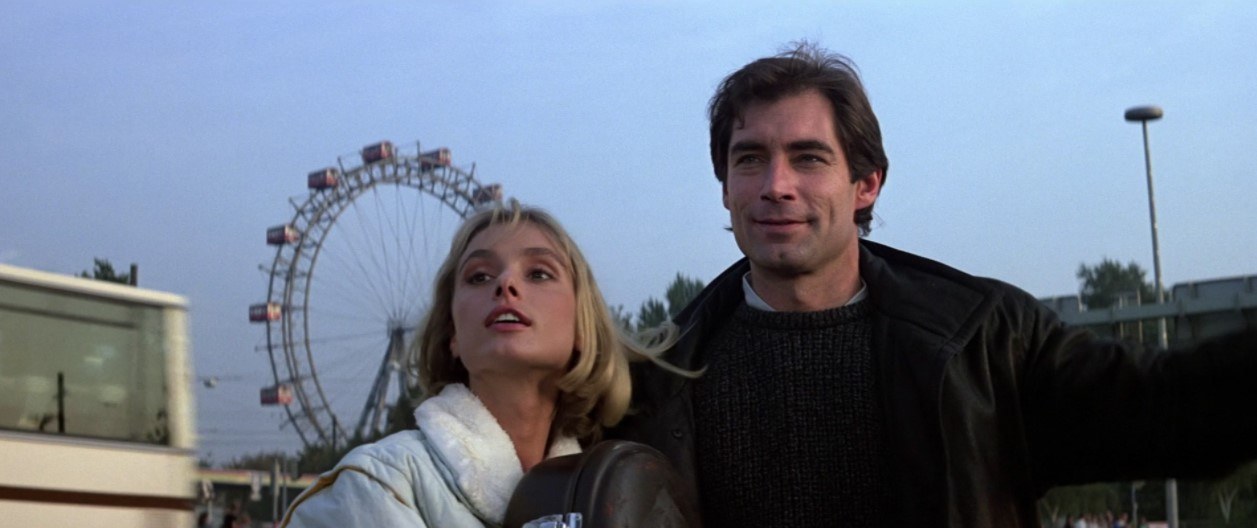
There is really only one way to ensure a good match. “I take notes on the lighting. I’m very meticulous,” said Mills. “I religiously write them down every night in the script. I don’t take camera measurements, however. I’ve got a good memory for that. I know exactly where we’ve shot the sequence and I know where my key light was. The real problem is matching light balance.”
Undoubtedly, John Glen was aware of ghosts in the Prater. Mills recalls, “He did say in the beginning when we were discussing the look for the film that he wanted to keep it a little Third Man which is not easy to do because it was black-and-white. When we print down we are trying to recreate some of those moody feelings in Vienna, like when Bond comes into the sweet shop and goes upstairs to the bedroom armed to protect the KGB agent — we wanted it not a little spooky but moody.”
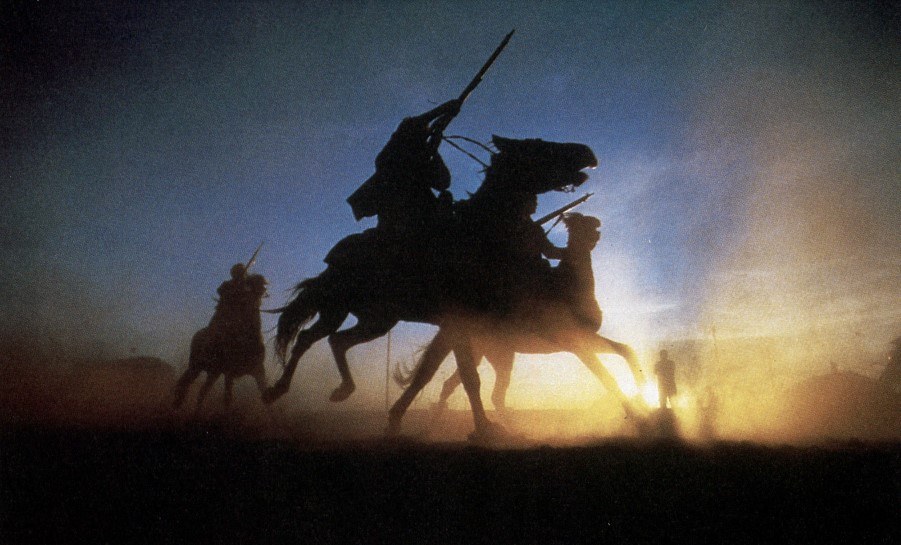
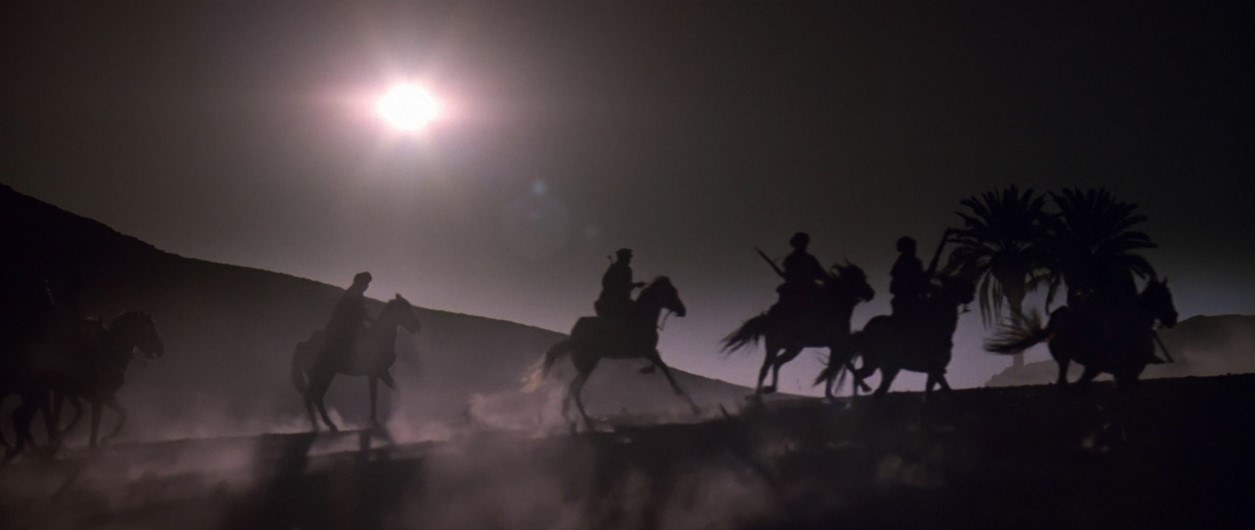
Then of course, there is the “cameraman’s dream” shot. Our hero and his lady have been rescued from the Russians by Afghan freedom fighters. However, Bond must ride out with them the next morning in order to complete his mission. The sun is coming up; the dust is thick in the air. Shafts of light strobe between the riders as they cross the top of a dune. The desert sky matches the color of the desert sand. It’s beautiful. “It was a chocolate-box shot — the sort of thing you do in a commercial. It’s full of grad filters and knocking the shutter down to something like 45 degrees instead of 180 degrees. It meant stopping down as far as I could possibly go without getting a hot spot on the anamorphic lenses. I was very pleased and it looked very good. But it’s a dream for a cameraman — no cameraman could blow it really if you’ve just a little time to prepare.” No romantic in the audience will likely forget it.
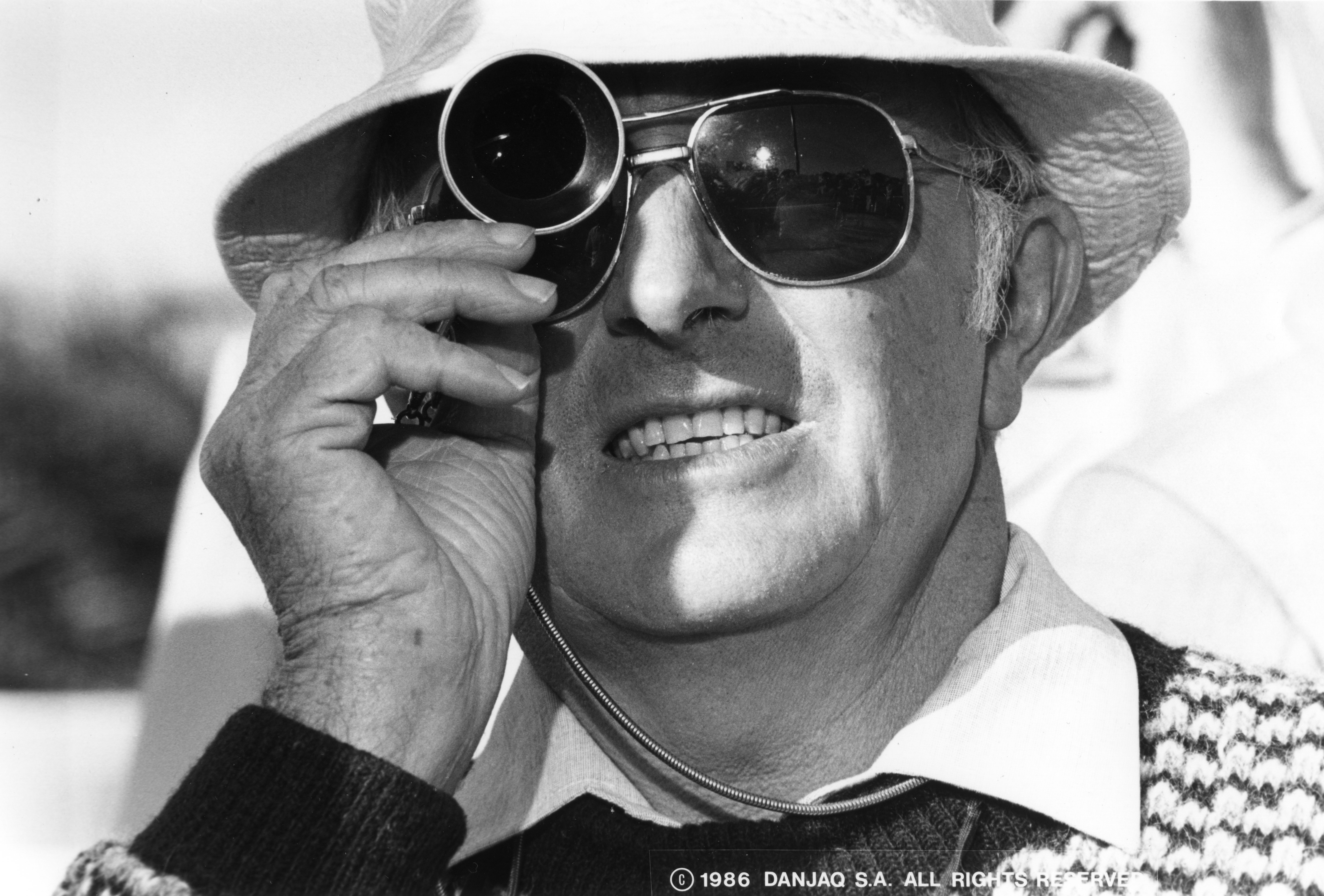
The important ingredient for Mills, and for the others in their fashion, is the rapport on the set. They like to go to work each morning. “I don’t think people who go to the cinema realize how vital chemistry is on the floor. It’s so important that there be chemistry between the director and the director of photography. John allows me to contribute rather than just be an illuminator. I can tell him my ideas and he’ll say, ‘It’s bloody awful,’ or ‘Alec, I like it.’ I’d hate to be on a film where I had to sit there like a lemon.”
Mills would return two years later to shoot the next Bond film — License to Kill (1989).
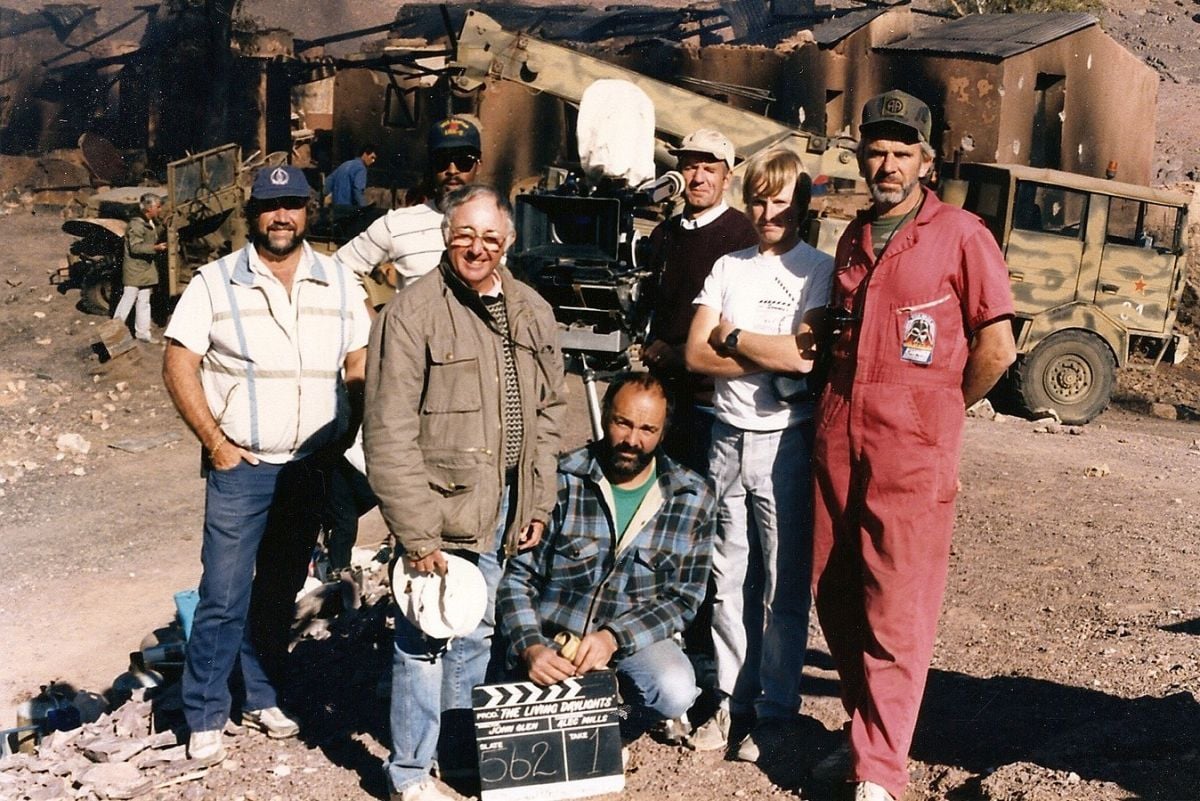
Thirteen Bond films ought to be the perfect career for an art director. Beginning as a draftsman on Goldfinger and moving through the ranks to production designer — first on For Your Eyes Only — sounds like a full life, but Peter Lamont's other credits are equally impressive. He has three Academy Award nominations. One he shares with Ken Adam for The Spy Who Loved Me; another is for his work on Fiddler on the Roof. His fine touch was also evident on Sleuth, The Seven-per-Cent Solution, and, most recently, Aliens, for which he also received a nomination.
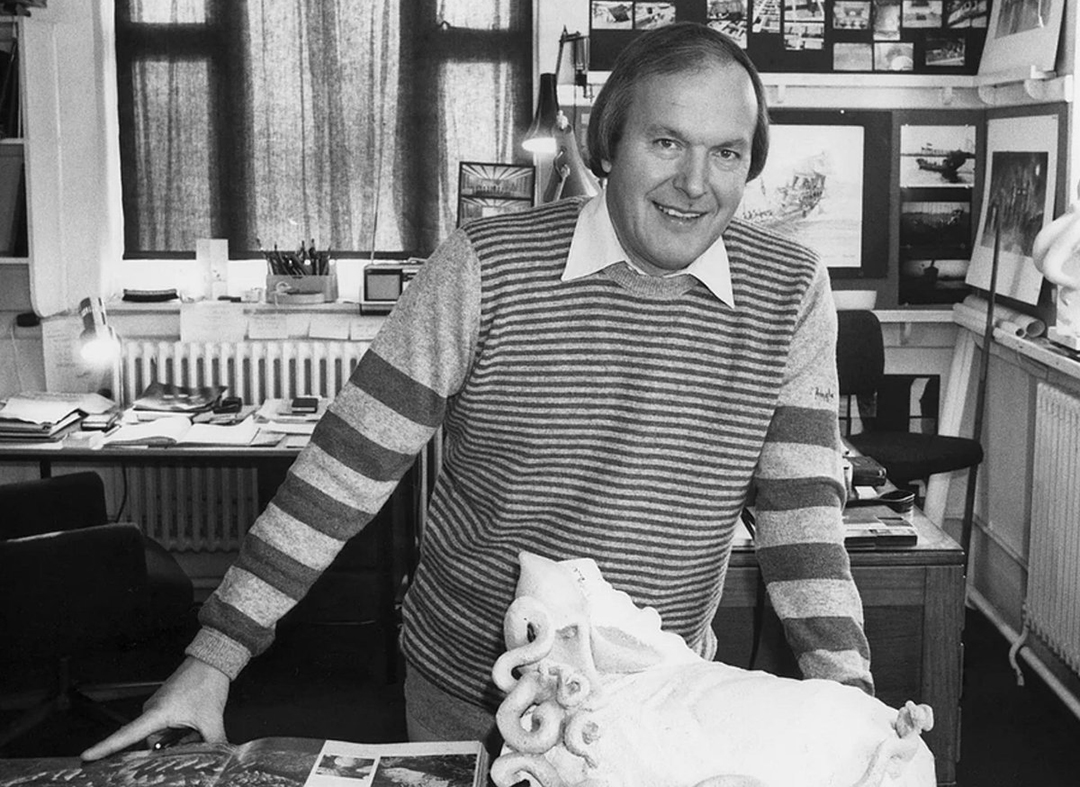
Sitting comfortably in the formal English garden that is part of Pinewood, Lamont explained his long association with 007. “I must admit when I first got involved I thought, ‘Oh, James Bond!’ I used to follow the stories in the Daily Express. A friend of mine phoned me up who was the art director under Ken Adam on Goldfinger, and said ‘If you’d like to join us as a draftsman, please do.’ At that time, From Russia With Love had just come out. I went and saw it and my mind was blown! This was something to be believed — how good everything was and how good the props and sets were.
“When I joined on Goldfinger with Ken Adam, I didn’t know him at all. He just gave me a whole ream of papers and photographs and said, ‘This is Fort Knox, and I think you better draw it up.’ He would come in once in a while and make a few remarks and after about four weeks I had a sheaf of drawings of Fort Knox. At that time in the studio, they had an estimator. They sent over all the drawings and the set was going to come to about £56,000. At that time it was totally unheard of... Unheard of! I thought, ‘My God, now I’ve really done it.’ Nobody turned a hair! Guy Hamilton, who was the director at the time, said he thought he could economize a bit and they got it down to about £40,000 and said, ‘Okay, let’s do it.’”
Not a bad beginning for the new kid on the block.
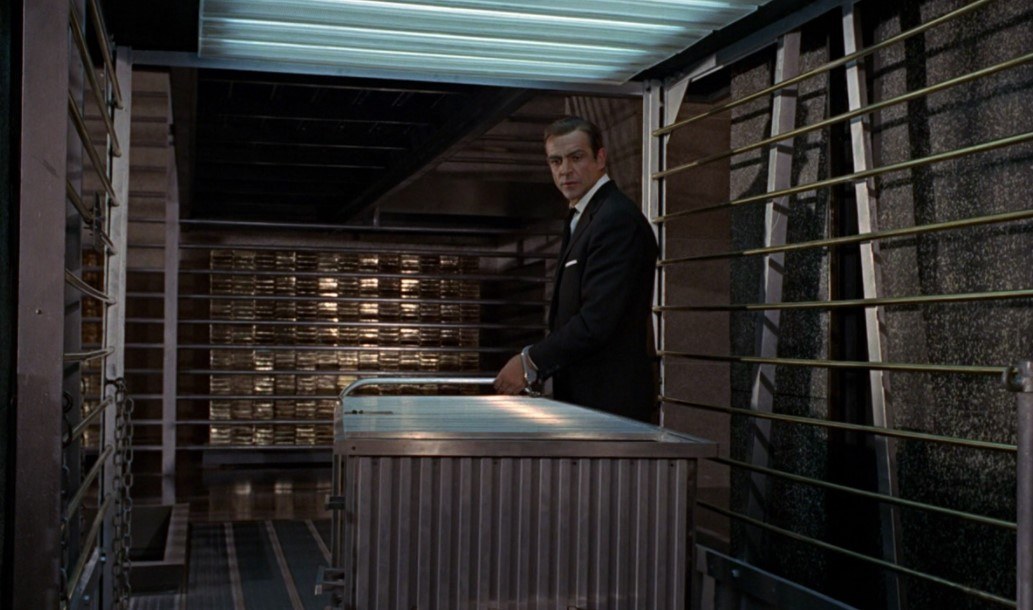
From Fort Knox to constructing Vulcan Bombers from scraps to building underwater temples — production design on a Bond film is never dull. Lamont’s most recent bit of prestidigitation involved turning the Ouarzazate Airport in Morocco into an Afghan airfield. “The big problem was we weren’t sure we were going to have the cooperation of the Moroccan government. Eventually, we had to have the King’s signature. He did consent and helped tremendously. But it was nerve-wracking at times.”
Staging a battle sequence involving Russian aircraft, Freedom Fighters on horseback, Russian jeeps, and other military equipment can be a nightmare. First of all, Russian aircraft are hard to get — most of the time. “A lot of the equipment you just can’t get, but I must say on For Your Eyes Only we did actually charter a Russian helicopter from Poland. It was a rather costly business and we haven’t done it since. In the context of this film, we really wanted a big Russian prop-jet transport, but they aren’t readily available from sources that we know. But the Royal Moroccan Air Force did make a Hercules available to us and we applied decals to make it look Russian. It didn’t look bad,” recalled Lamont.
Ground transport was not as big a problem. “In Morocco the vehicles are French, so they don’t look particularly British or American. Russian vehicles are available in some instances and, of course, the Royal Moroccan government was helping us.”

Since most location shoots involve only exteriors the “reccies” and are often flights of fancy. Lamont and others saw the first choice of location for the wintertime car and cello chase in the early spring when there was little snow. Between their trip and the actual filming the sequence changed and new locations were required. A new location was chosen after a wild ride surpassing even Mr. Toad’s, but still it was early in the season and no one was sure that there would be the requisite ice on the lake. Mother Nature just doesn’t understand scheduling problems.
Lamont continued, “The biggest problem was an early script and a late start abroad. We had to make contingency plans. Supposing that the Moroccan government doesn’t come through, what are we going to do? And if the units start to catch up, we have to make sure we are always abreast of what they are doing so we don’t hold them up. It’s a constant battle and we sometimes have to rearrange the schedule. We have to rearrange it within artists’ contracts, what I can do and what has to be achieved.”
The locations require a lot of time, energy, and careful planning, but Lamont is also in charge of the interior sets that are constructed at Pinewood. For this Bond there were 36 sets. “We never spend very long on any set — maybe two or three days. It’s very expensive. The big problem is building, shooting, striking and rebuilding. It’s time-consuming. We did some clever revamps and I don’t think anyone will see them.

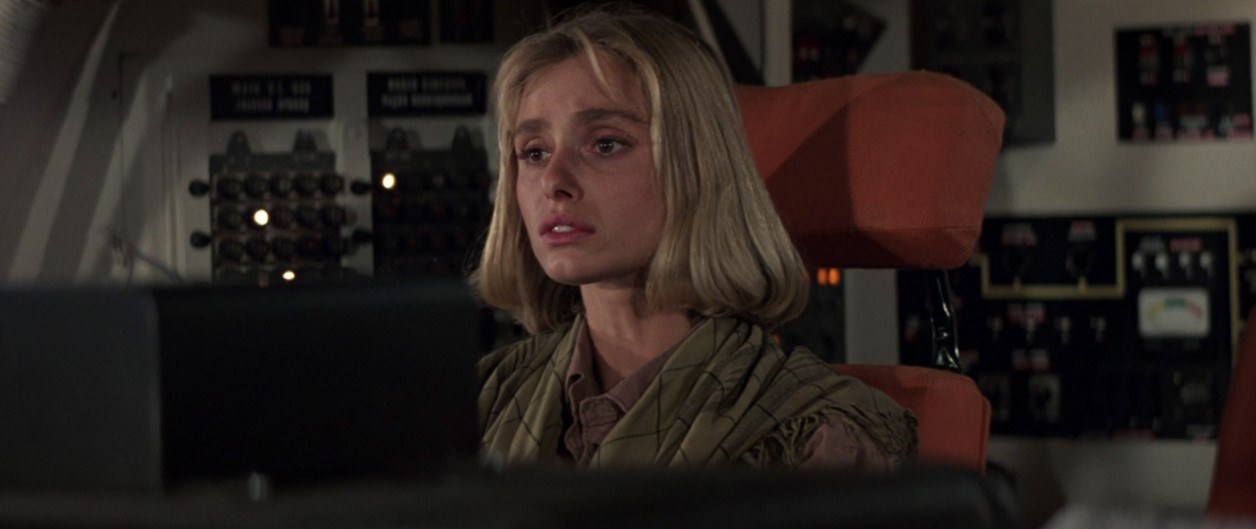
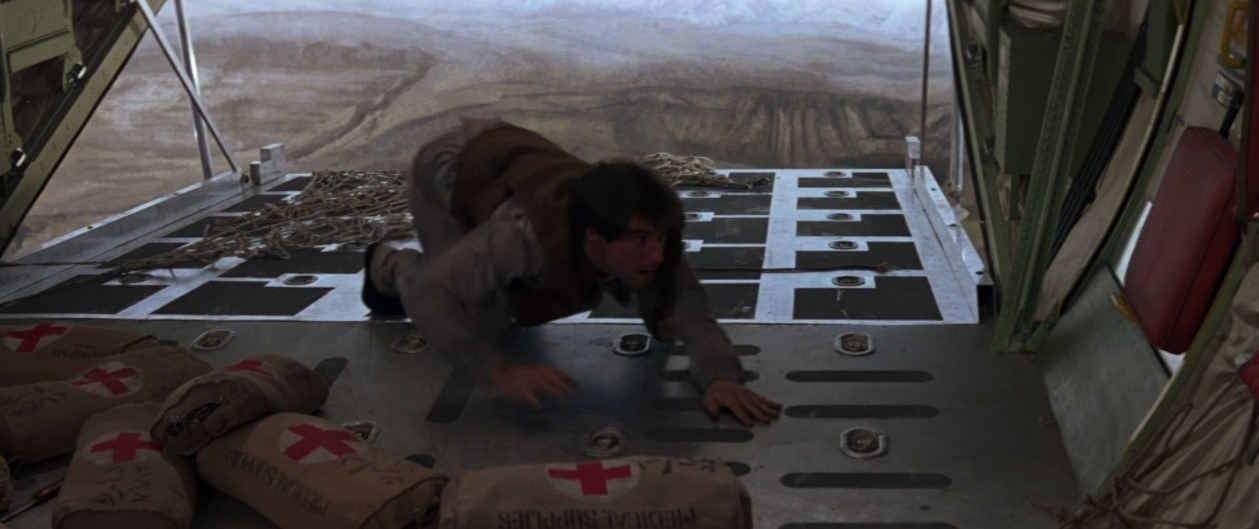
“I suppose our biggest chore was to build a complete Hercules interior with an executive cabin that had removable bulkheads. We built the cockpit, the whole cargo bay, and the exterior around the cargo bay. The cargo door worked. We also built the exterior of the flight deck. We built the whole thing on C stage on an all-way rocker. It looked quite good and it later cut in with the work the California aerial unit did. To the credit of the editors and the director, I defy anybody to say actually how we did it — what kind of process we used. I will say this, it was done real-for-real in the studio and in the air.”
It is Lamont who takes charge of the designs of such familiar Bond features as Q’s lab, the look of Q’s gadgets, and the always unbelievably expensive lair of the villain. This is the fourth time Lamont has designed a lab for Q. This one is supposedly at the home office rather than on foreign assignment and Lamont went for a high-tech look. “Philips Electronics has supplied us with thousands of pounds worth of extremely high-tech computers for their business systems. The type of thing they use in international banking. In the early days, we were lucky to get one or two computers, now we have two or three dozen of the most sophisticated computers ever made. Everything is set up and operating....”
“The most amazing piece of high-tech equipment we have is a huge video wall. It is made up of 12 individual screens and we have the choice of one huge moving picture or a combination of pictures. This is the first time it has ever been seen on film.”

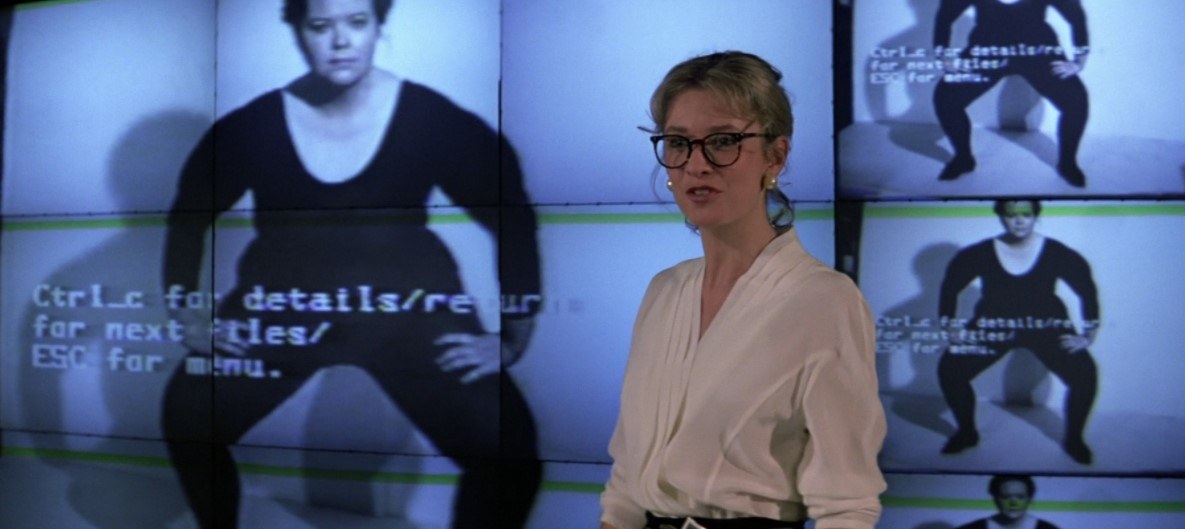
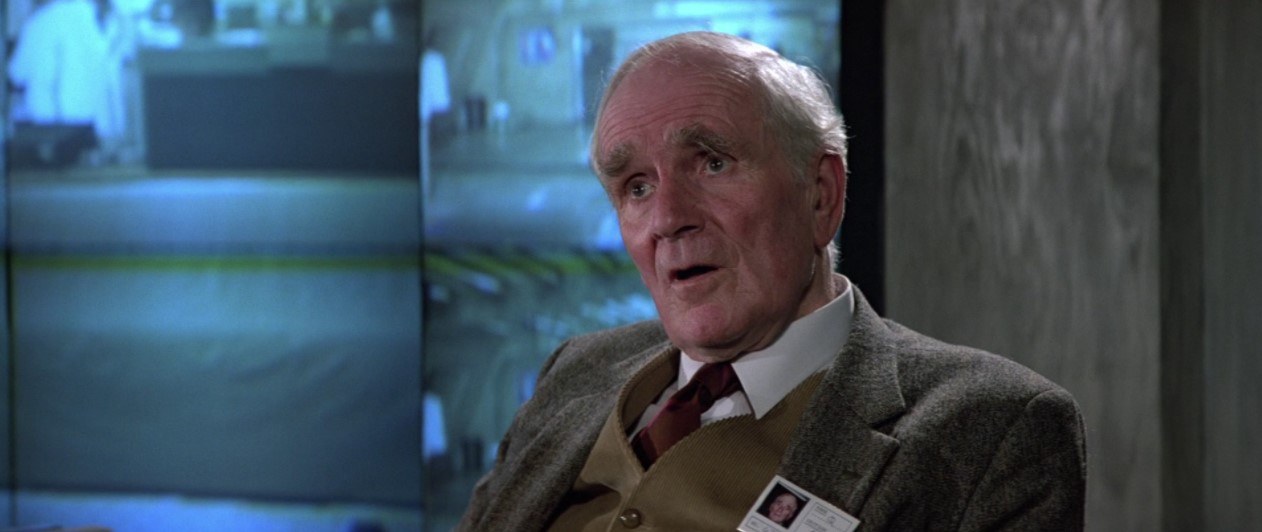
For The Living Daylights, the exterior of Whitaker’s (Joe Don Baker) villa is represented by the Forbes Museum in Tangier. The museum contains the world’s largest private collection of miniature soldiers and military memorabilia covering centuries of land warfare. A fitting home for a villainous arms dealer. The interior was constructed at Pinewood and, as they inevitably are, destroyed by 007 when the villain gets his comeuppance. The interior was based on the interior of the museum. In fact, only after the location crew saw the museum did our villain become a fanatic on military strategy. The Pinewood set included nine life-sized wax effigies of famous military leaders — all with Whitaker’s face.
The change in mood from past Bond films is also reflected in the art direction. There are no sets in The Living Daylights on the scale of the space station in Moonraker, or the interior of the blimp in A View To A Kill or Octopussy’s floating palace. Instead, there has been a return to realism. Even the kinds of villains are more realistic — a militant Russian general, a KGB double agent, and an American arms dealer — all in keeping with the effort to go back to the books.
For Lamont, as for Glen, there is a certain thrill at being able to “do what you can imagine.” He would do another Bond film without hesitation, but, he warns, “People must never forget — all these Bond pictures are a huge team effort. We are only as good as one another. It’s all a big tea. We rather like to leave people thinking, ‘How the hell did they do it?!’”
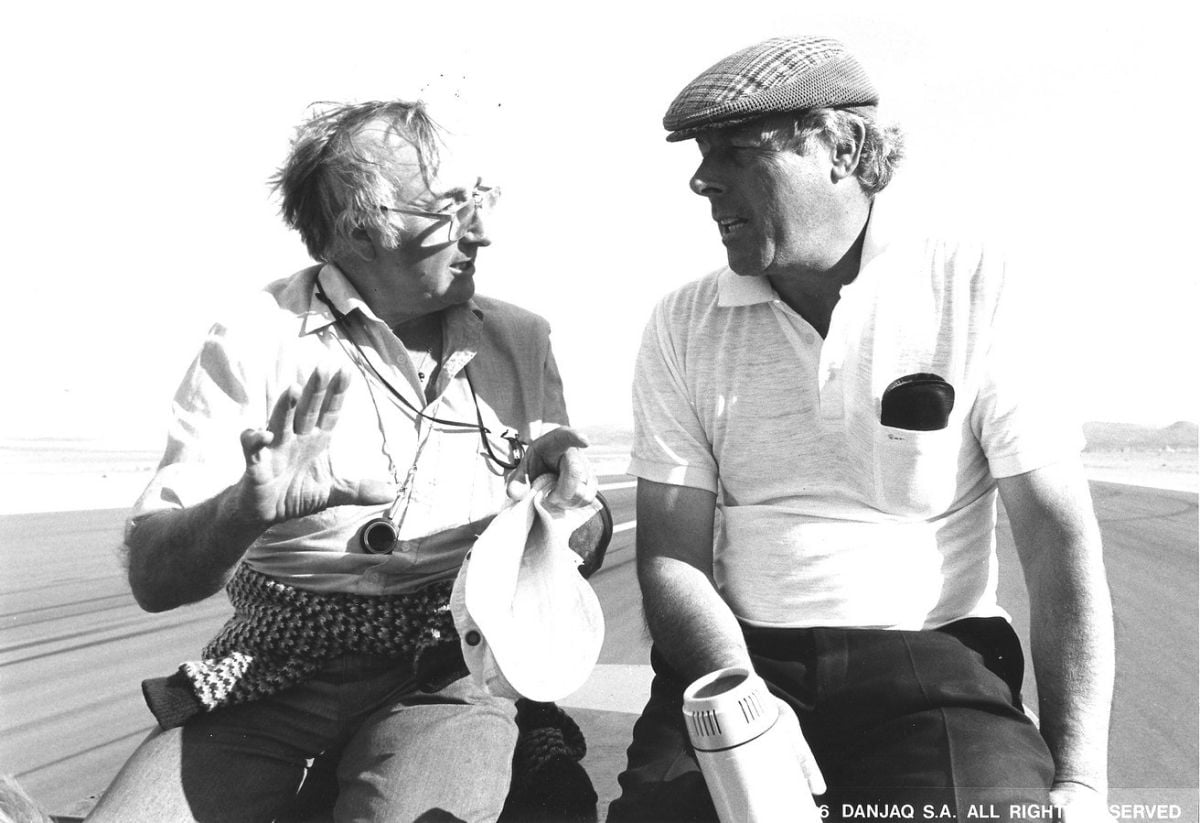
The Living Daylights special visual effects supervisor John Richardson, like most of the Bond family, comes with a history.
His father, Cliff Richardson, practically invented special effects in England in the early 1920s at Ealing Studios. John’s first film was Exodus (1960) — he left school for a while at about 15 to help his father shoot in Israel. His credit appears on such familiar films as A Bridge Too Far, Superman, ffolkes and Raise The Titanic, and he recently shared an Academy Award win for his work on Aliens. Richardson’s association with Bond began with Moonraker and he hasn’t missed one since.
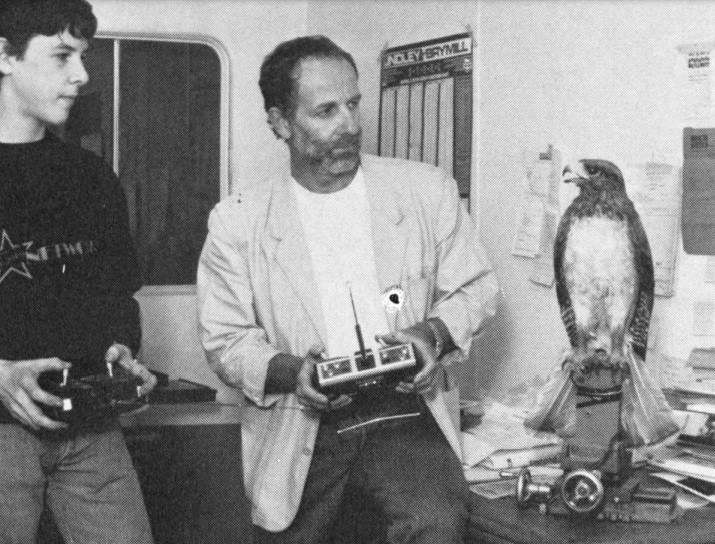
Ladyhawke, represent second and third generation
of special effects family.
If the locations in a Bond film are like a minor character, then the special effects are eligible for best supporting role. Audience expectations are always high — what can they possibly do that they haven’t done before? Consider this list from The Living Daylights: In the major effects category, there is almost a mid-air collision between a Hercules and a passenger plane, a jeep ejected from the belly of the Hercules with our heroes in it, glass doors chopping an agent in half, a mid-air battle between Bond and the evil Necros hanging on a net suspended underneath the Hercules — and that’s just the beginning. The Aston-Martin returns in one of its largest roles ever: it cuts the chassis off a chase car with its built-in laser, grows skis so it can maneuver on a lake of ice, fires two rockets and blows up a roadblock, and takes on a little extra speed with a special jet engine.
But Richardson’s purview doesn’t end there. There are myriad little things: for instance, the ghetto blaster that will literally knock your head off, the sofa that swallows people, the toxic and explosive keyring - all of it comes under the title of special effects.
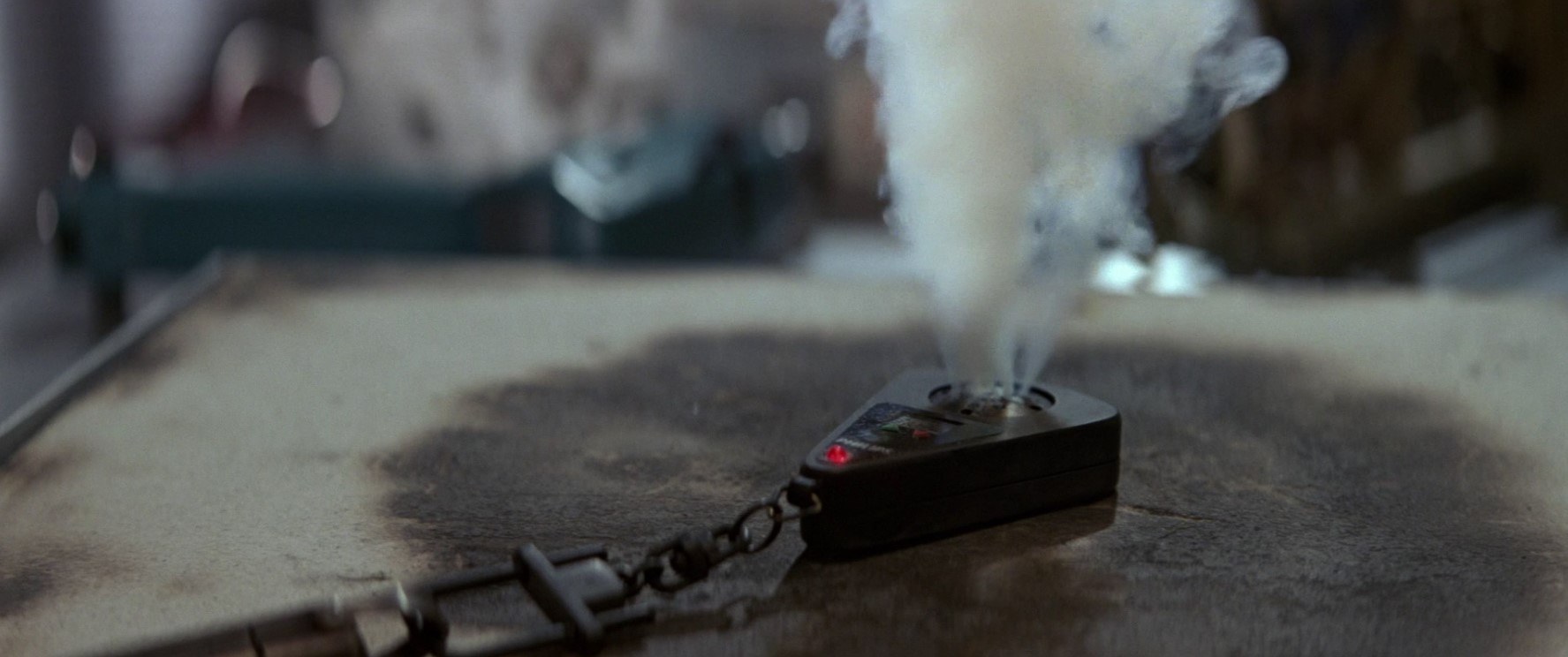
Richardson is a man that director John Glen describes as a “bit dour, but he comes up with some lovely ideas.” It’s not just the ideas but the execution of those ideas that make Richardson’s place in the world of special effects. In the rough cut recently viewed at Pinewood, there were maybe four or five shots marked for opticals. Everything else was done, as the British say, real-for-real.
Probably Richardson’s best in-camera stunt involved a bridge over a ravine in Morocco. The Afghan Freedom Fighters are being chased across it by Russians in various vehicles. The audience sees a bridge over a 100' ravine. There are explosions going off on the bridge while horses and vehicles crowd over it. Eventually Bond blows it up.
In reality, the ravine was about 25 feet deep. “We laid a foreground miniature of the ravine and we used the bridge so that you could see vehicles driving along it,” explained Richardson. “We used from the handrail down to the road level of the existing bridge. Everything beneath that was miniature. It was 23 feet from the camera lens to the miniature. It was something like 1,000' from the camera lens to the real bridge so that the two married in. We could actually do a nodal pan on it.
“All of the blowing up was actually on another bridge which we constructed at Pinewood. It was about quarter scale. We just had one part of the back wall of the ravine and about two-thirds or three-quarters of the span of the bridge because it was all shot from the bottom looking up. We were trying to keep the widest angle possible to get the height and scale,” Richardson said. Maybe the best trick of all was the fact that the first footage was shot in the Sahara desert in November. It was still very bright and sunny and warm. The explosion was shot in the backlot at Pinewood in January with the crew literally scraping ice off it before shooting.
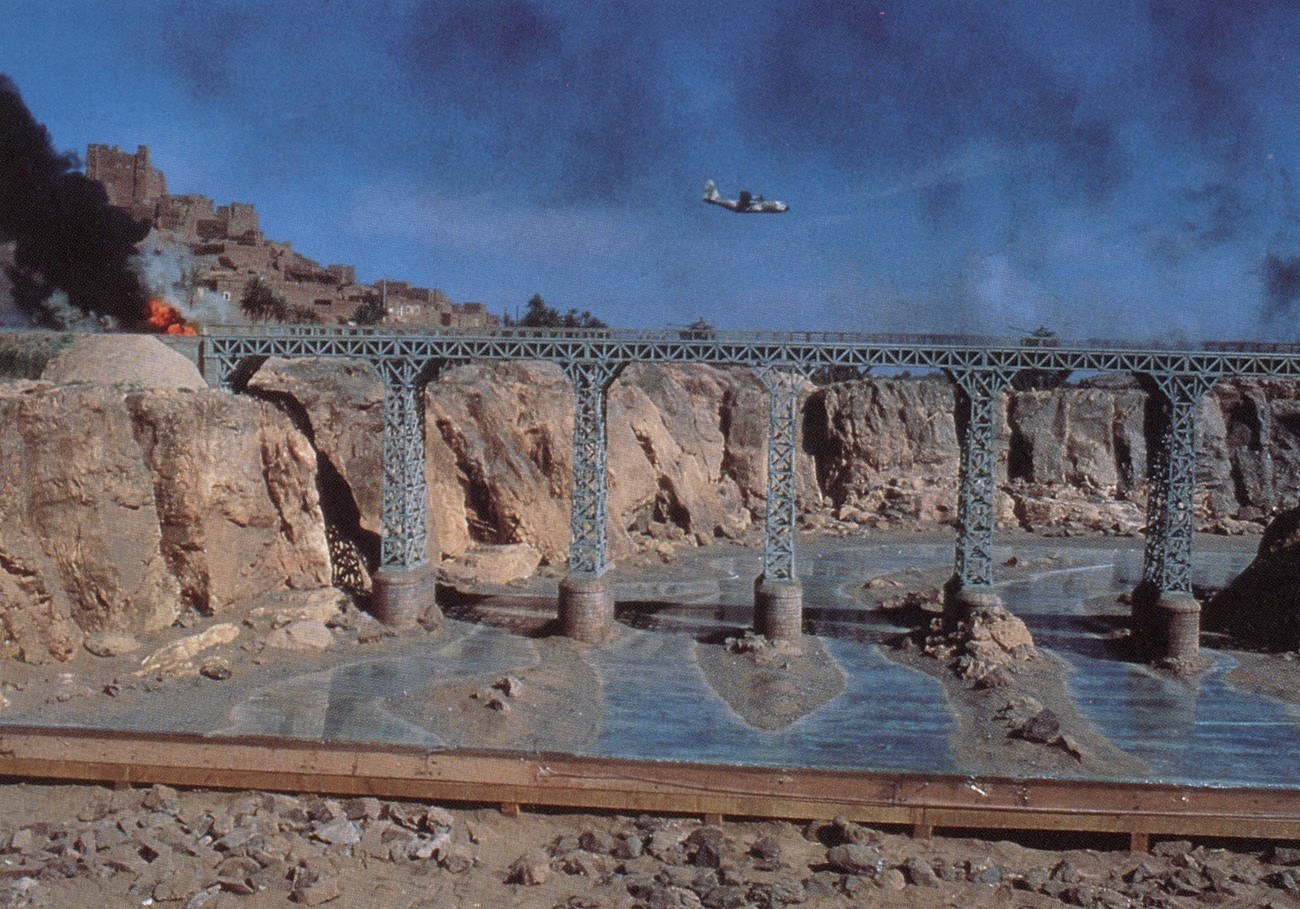
miniature of the
bridge, with real tanks
crossing it.
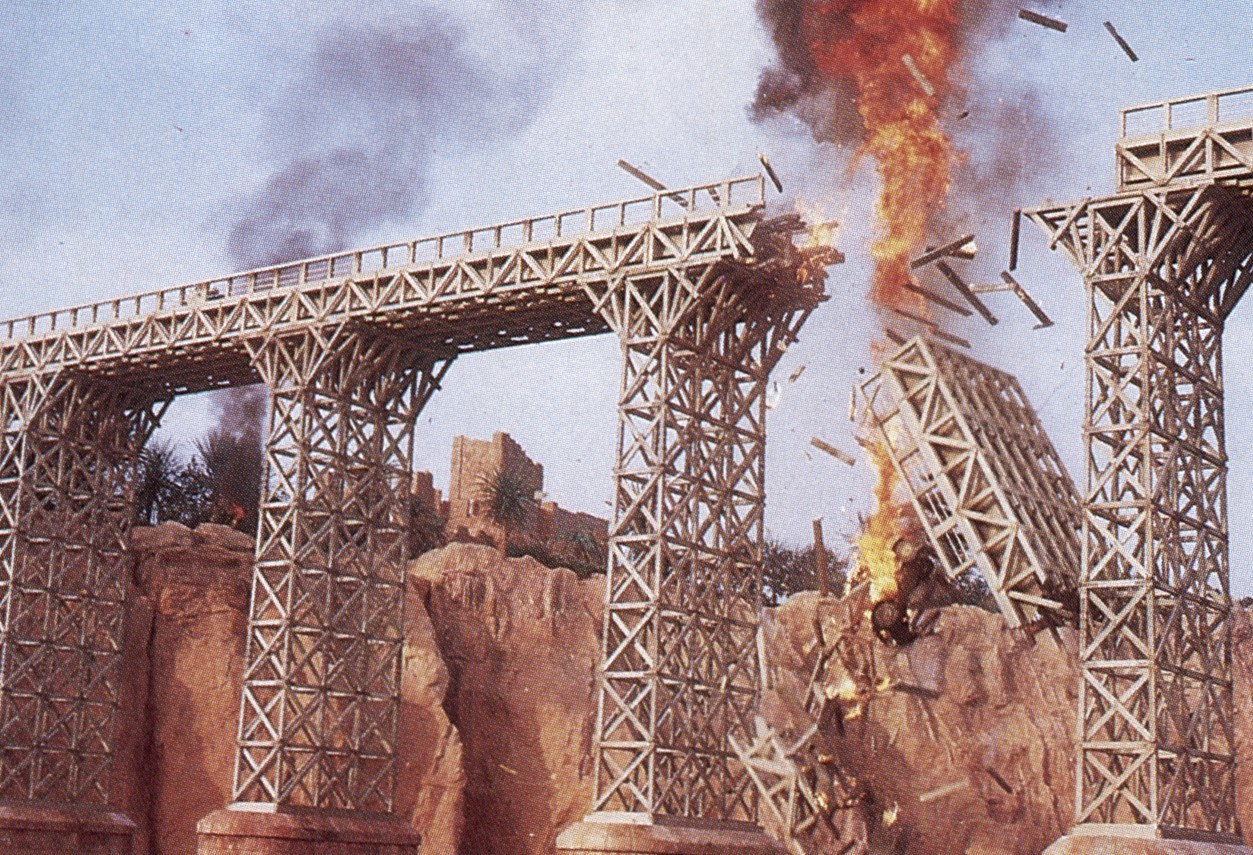
This Bond has more miniatures in it than other recent Bonds and they appear in unusual places. The first miniature is of a Landrover exploding on Gibraltar, but the most exciting miniature is the near-miss between the two airplanes.
Richardson revealed that the entire sequence was miniature, from the moment the aircraft starts to land until it hits the armored car. “We used two scales of radio-controlled planes because of the difference in size between the Hercules and the landing aircraft. If we built everything to the scale of the landing aircraft, then the Hercules would have been unmanageable. It would have been a model with a 25' wingspan. If we built everything to the scale of the Hercules, then the Russian aircraft would have been too small to rig the explosion. So we had a twelfth-scale Russian aircraft landing and we had a twelfth-scale Hercules roaring down the runway towards it and taking off over the top of it. We had a twelfth-scale armored car in conjunction with it, because we did see all three together. Then as soon as the Hercules was off the ground and out of our shot, we substituted for a sixth-scale aircraft which gave us better angles. We could get the camera lower and see the plane come along and hit the armored car and the wing take the top off the armored car.”
The jeep that drops at the last possible moment from the belly of the Hercules was a miniature, too. The jeep itself was only 9" long. Those shots cut in with shots of Dalton and D’Abo actually driving a specially rigged jeep up over a small ramp and of a landing dressed up with dust explosions to make it look as though it hit much harder.
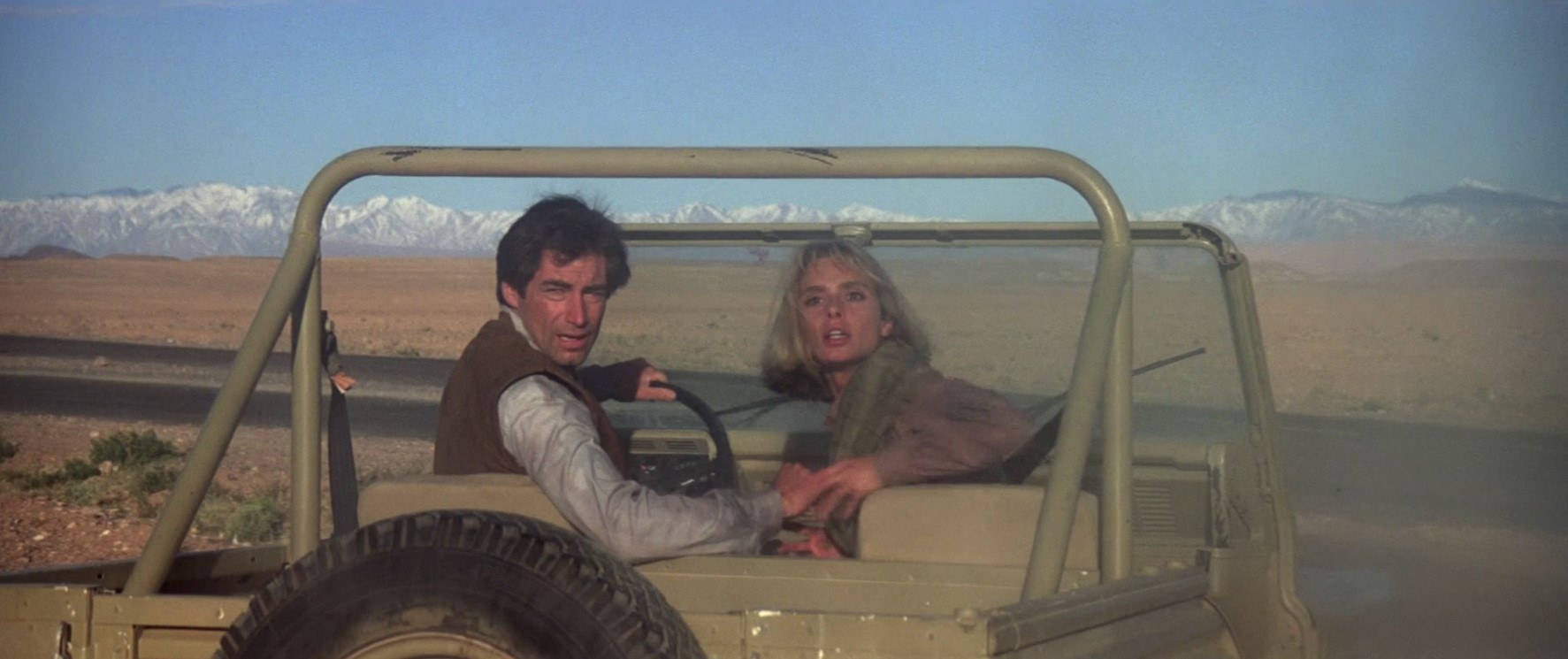
Car stunts in the Bond series are legendary. At least one car in each film usually winds up in several pieces. There are also many exotic chase sequences. Richardson has worked with French stunt driver Remy Julienne for years, not only in driving the cars but in designing them as well. It was Julienne behind the wheel of the Aston-Martin as it did figure-eights across the frozen Austrian lake. Richardson said, “It was dangerous standing on the ice, let alone driving on it. It was cracking and groaning and moving all the time, which is sort of disconcerting to say the least.”
Everything filmed on the lake was full scale, including the Aston-Martin driving around with the shell of a boathouse over it. Only one scene was done at Pinewood. The tires on the Aston-Martin are blown out and James, ingeniously, uses the wheel rims to cut a large hole in the ice. The villains are, of course, right in the middle of Bond’s doughnut.

The scene of the chase car sinking was done at the Pinewood tank. Explained Richardson, “We built a hydraulic rig in the tank, filled it with water with an iced surface and then slowly lowered the vehicle into the water.” Sounds simple enough.
The Aston-Martin takes its usual beating in this film. Therefore, Richardson had three real cars and a number of dummies made. Whenever it flies through the air, jumps over a dam, slides down a snowbank and blows up, it’s the dummy. In most of those instances, the car has been fired from a large cannon and is unmanned.
Occasionally some of Bond’s stunts wind up on the cutting room floor.
Richardson could think of two instances on The Living Daylights. “We actually did the gag where we chopped the guy in half at the amusement park and you saw the two halves fall away. But, as expected, it was a little too horrific for a Bond film... it ended up on the [cutting room] floor. There was another gag in Tangier in the rooftop chase sequence. Bond got on a carpet — we called it the magic carpet gag — and jumped on some power lines and slid across the rooftops of Tangier. Unfortunately, something had to go and that went. It’s a pity; it was an amusing gag.”
Despite the hundreds of details, scheduling problems, and “fiddly little things,” Richardson — like Mills, Lamont, and Glen — insists that he is ready for Bond number 16. Concluded Richardson, “It’s all good fun, I suppose. I’d do another tomorrow — but I would like a couple of weeks holiday first.”
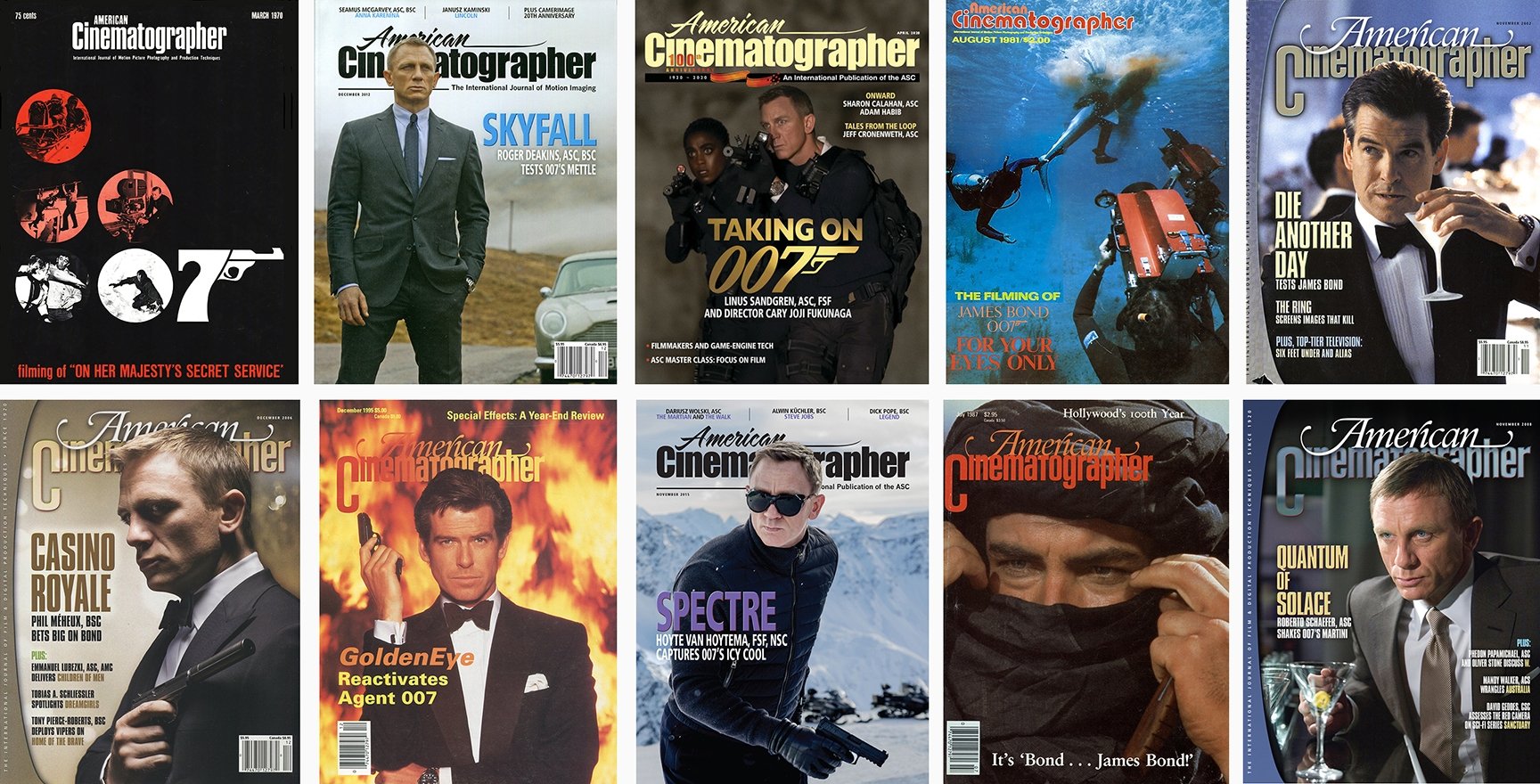
You’ll find more of AC’s 007 coverage
from our archives here.
